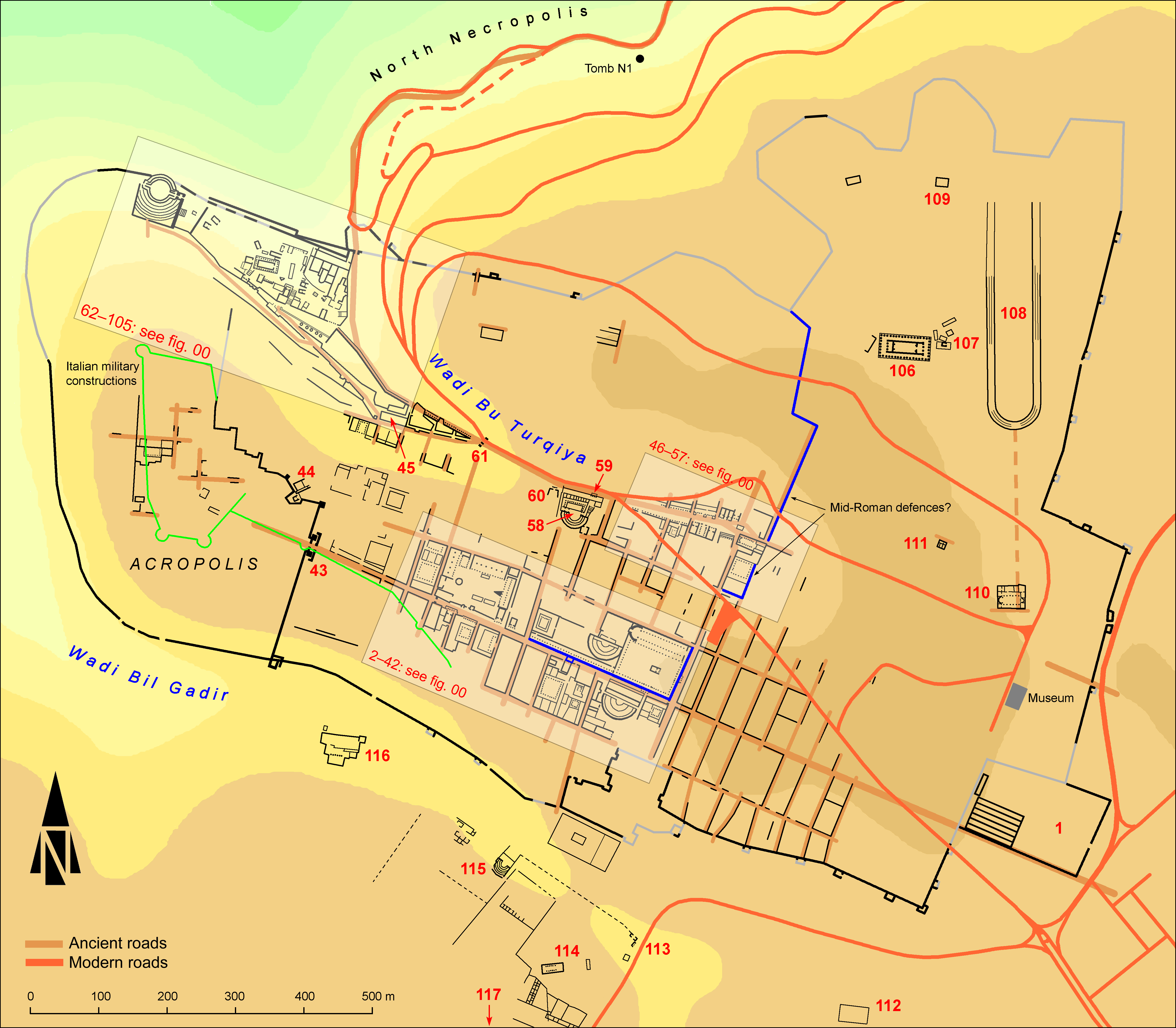EpiDoc XML:
IGCyr0934002
Trismegistos ID:
738450
Source description
Support: Small rectangular stele of local limestone with a moulding on top and a relief featuring a standing man holding the bridle of a horse which stands behind him and a veiled woman probably holding a libation jug and a patera; both are clad in long robes; under this scene thirteen horizontal serpents, slightly ondulating (w: 0.14 to 0.155 × h: 0.38 × d: 0.06).
Layout: Inscribed under the serpents (height of the inscribed area 0.185).
Letters: 0.015; sigma with parallel outer bars; the letters are much erased and seem to have been cut deeply.
Date: Second century BC
Findspot: Found before 1985 at Cyrene ➚: in the area of the Doric temple of the Southern temple precinct.
Place of origin: Findspot.
Last recorded location: Cyrene Museum, 2050. Seen by C. Dobias-Lalou in 1985 at Shahat: Cyrene Museum.
Text constituted from: Transcription from stone (CDL).
Bibliography
Dobias-Lalou 2006, pp. 91-94, whence SEG, 56.2030, A; IGCyr 093400 ➚. Cf. Dobias-Lalou 2016, pp. 164-165, 171, whence SEG, 66.2313; Rosamilia 2023, p. 116 and p. 121, footnote 14..
Text
French translation
Seigneur, toi qui engendres.
English translation
O Lord, who gives life.
Italian translation
Signore, tu che dai la vita.
Arabic translation
إلًّهِي (أو ملكي)، يا من تمنح الحياة.
Commentary
The restoration is allowed by the parallel with IGCyr0935002.
It cannot be decided whether ἄναξ is here a noun meaning 'lord' or a divine name. In the latter case, it also unclear whether it is the same deity as in IGCyr0884002 and IGCyr0885002.
In the 2006 publication C. Dobias-Lalou thought that this Anax might be a local figure assimilated to one of the Dioscuri, whom she thought was mentioned on a votive relief published in the same paper. This interpretation is now obsolete, as demonstrated at Dobias-Lalou 2016, and the identification of the deity or epithet mentioned here remains unclear.
The details about the findspot, new to the second edition, are owed to Luni and passed on by Rosamilia, who very cautiously mentions some deities to whom the temple might have been dedicated, adding that the small stele would anyway not necessarily refer to that deity.
CC BY-NC-SA 4.0 Deed Attribution-NonCommercial-ShareAlike 4.0 International License.
All citation, reuse or distribution of this work must contain a link back to DOI: https://doi.org/10.60760/unibo/igcyrgvcyr2 and the filename (IGCyr000000 or GVCyr000), as well as the year of consultation.

